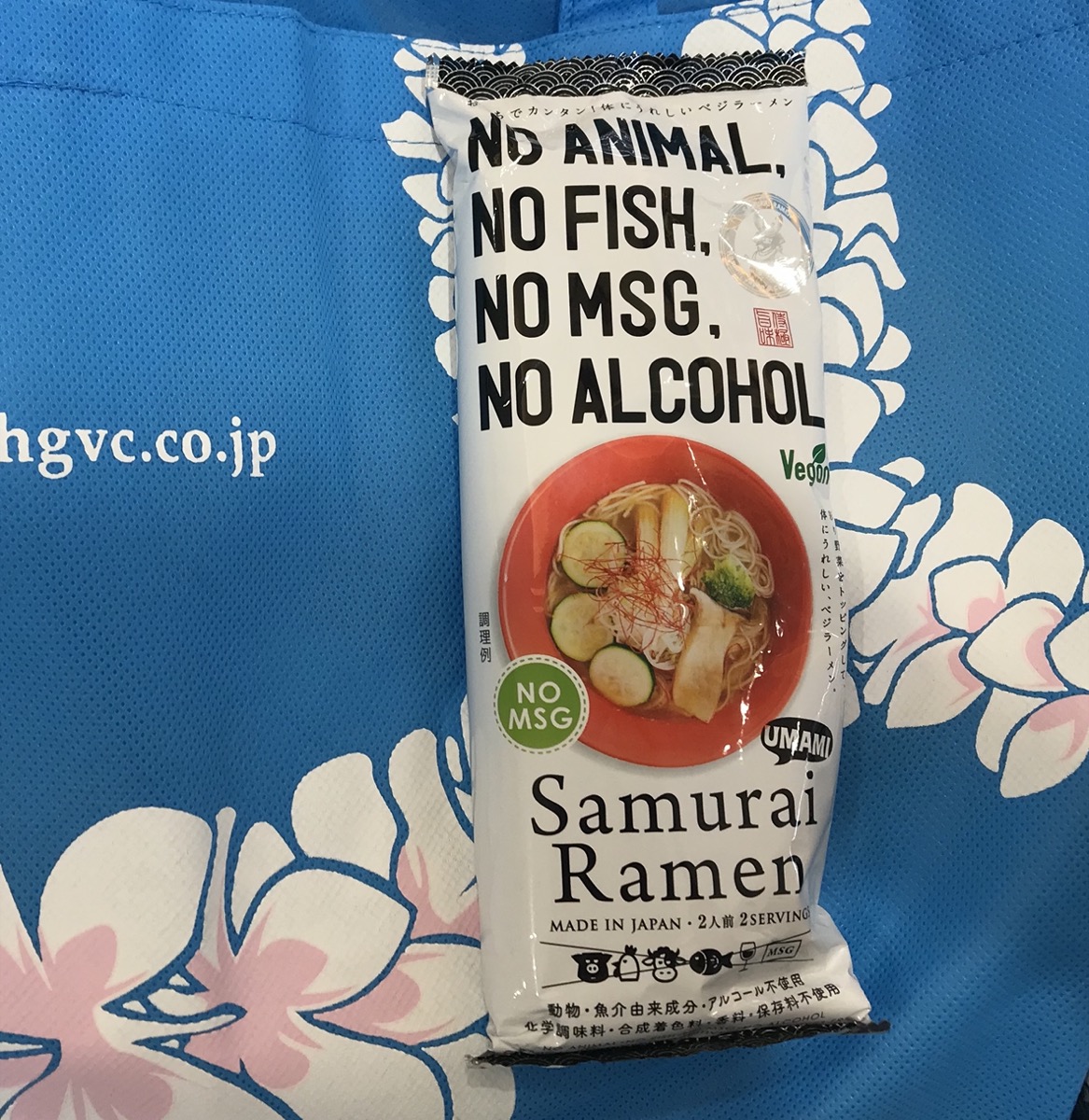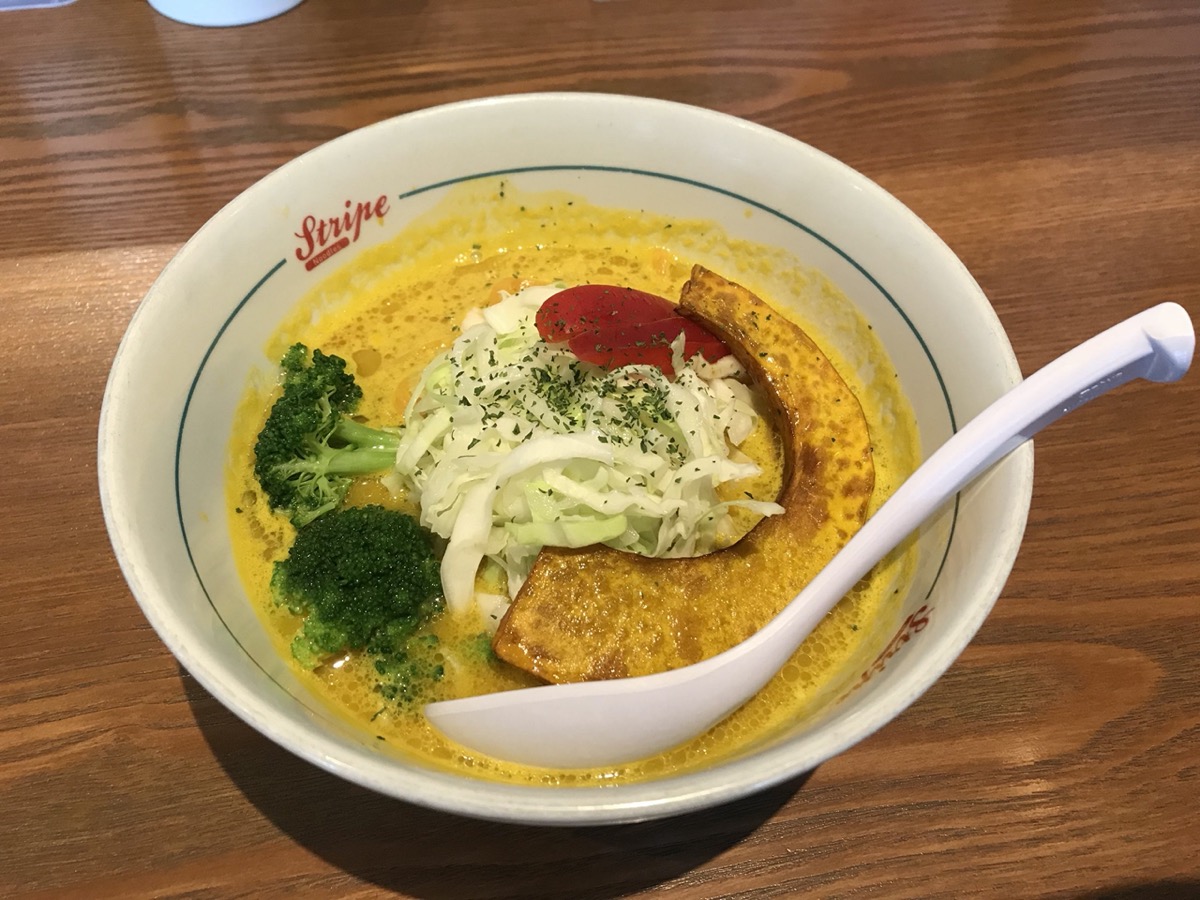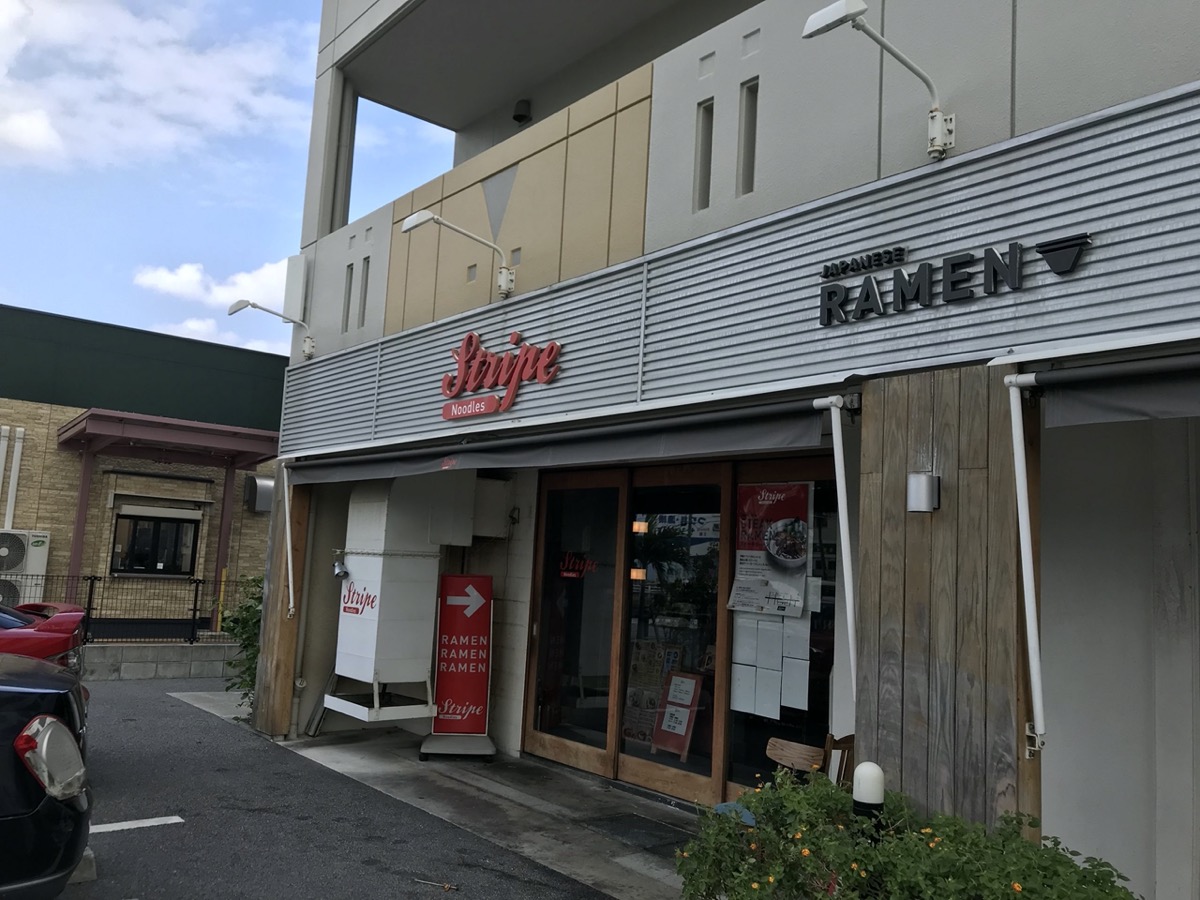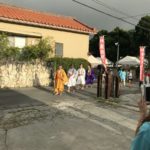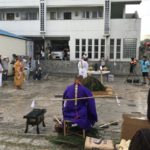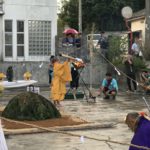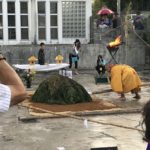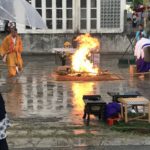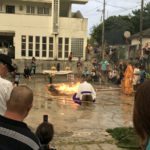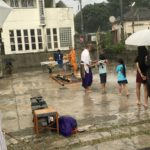UPDATE March 2020: Only a few short years ago Vegan ramen was rare, now there are several! : Sora No Ira & A Hokkaido ramen, both in the Noren Plaza Ramen street! Also Orange Shokodu in Kin town.
There is a place called Stripe Noodles in Chatan, Okinawa (outside of the American Village area) that serves a type of vegan ramen (in addition to several meaty ramen types, predominantly know for their “steak ramen”).
This place is very Americanized and a significant majority of the customers are foreigners, especially American. It becomes obvious when you are eating your noodles and NO ONE is slurping, not even a tiny bit! I found it eerie to be honest, and made me wonder if I was even in a ramen shop… Later it occurred to me that the other Americans may have been horrified at my slurping manners, just the same as I was horrified at their complete lack of slurping manners.
Anyway, during the month of October, they serve pumpkin (kabocha かぼちゃ) “ramen” and year-round they serve a tomato-based ramen (also vegan). Since vegan/vegetarian ramen is extremely rare in Okinawa and Japan, it is good for people with dietary restrictions.
I have only tried the pumpkin “ramen.” I put it in quotes because… well, it wasn’t really like ramen. It tastes pretty decent, but I feel it is a stretch to really consider it ramen. The “broth” was really thick and sweet like a typical kabocha soup; I thought maybe it would be better if it was a little thinner it would feel more like a ramen. It was also lacking something to sort of balance out the sweetness. Though the noodles were surprisingly fairly good– chewy consistence and not overcooked or bloated like I feared they might be going into an Americanized place.
Overall, it was okay. Not amazing, but the taste was okay, and the price not unreasonable (though perhaps a bit high for typical ramen). Mostly, I would say it was the atmosphere that was lacking. But maybe that makes me like a crotchety old man, who just prefers the darker interior noodle shops with din of clanking and slurping and ramen chefs continuously calling out.
I haven’t tried the tomato version yet… maybe I will try to go back sometime and try. But first I will need to muster up the courage to return to a noodle shop where there is no slurping.
The ticket machine menu is extremely English-friendly and there is parking in front of the store.
If you are still looking for another vegan ramen, then check out Rakurobi kitchen, macrobiotic cafe:楽ロビkitchen; they have a version of vegan ramen on their menu. They are not ramen specialists, but rather a macrobiotic and healthy food cafe. **New: Check out Orange Shokudo for vegan ramen: Another Vegan Ramen option in Okinawa: Orange Shokudo
address: https://goo.gl/maps/Quj4SzMsRc12
**BONUS: While out shopping I found vegan ramen to make at home at my local SanA grocery store. I was surprised, as occasionally I see instant vegan ramen at HappyMore or Pals farmer market stores, but it is not commonly seen here in Okinawa.
